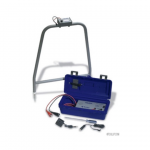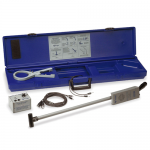Fred B
Senior Member
- Location
- Upstate, NY
- Occupation
- Electrician
Got a call, no power in a garage. Simple no lights or receptacles working. Detached garage run with a single branch circuit. Tested with meter - 120V L/N, with no load. Added a heater load initially started then gradually died. Then unplug and still read 120V. Added load back and this time it didn't run. Then tried a smaller load, a 60watt incandescent bulb, initally lit then faded. Unplug load and again had 120v. This time added meter inline at same time as applying load. Meter spike momentarily to 120v then faded to 0v while load applied, and stayed at 0v as long as load was applied and only rebounded when load removed. No power issues reported in main house, and no issue at breaker.
Additional readings, L/G had 0v, N/G 0 ohm, open ground.
HO reports this history:
Questioned apparent driveway excavation I saw when I arrived. HO states it was 6yrs old and power had been ok until recently. Excavation was at least 6ft deep and crossed probable buried branch feeder location, based on depth of visible culvert exit from excavation. Possibly the buried feeder was damaged during excavation and only now presenting.
Thoughts?
Additional readings, L/G had 0v, N/G 0 ohm, open ground.
HO reports this history:
Questioned apparent driveway excavation I saw when I arrived. HO states it was 6yrs old and power had been ok until recently. Excavation was at least 6ft deep and crossed probable buried branch feeder location, based on depth of visible culvert exit from excavation. Possibly the buried feeder was damaged during excavation and only now presenting.
Thoughts?



